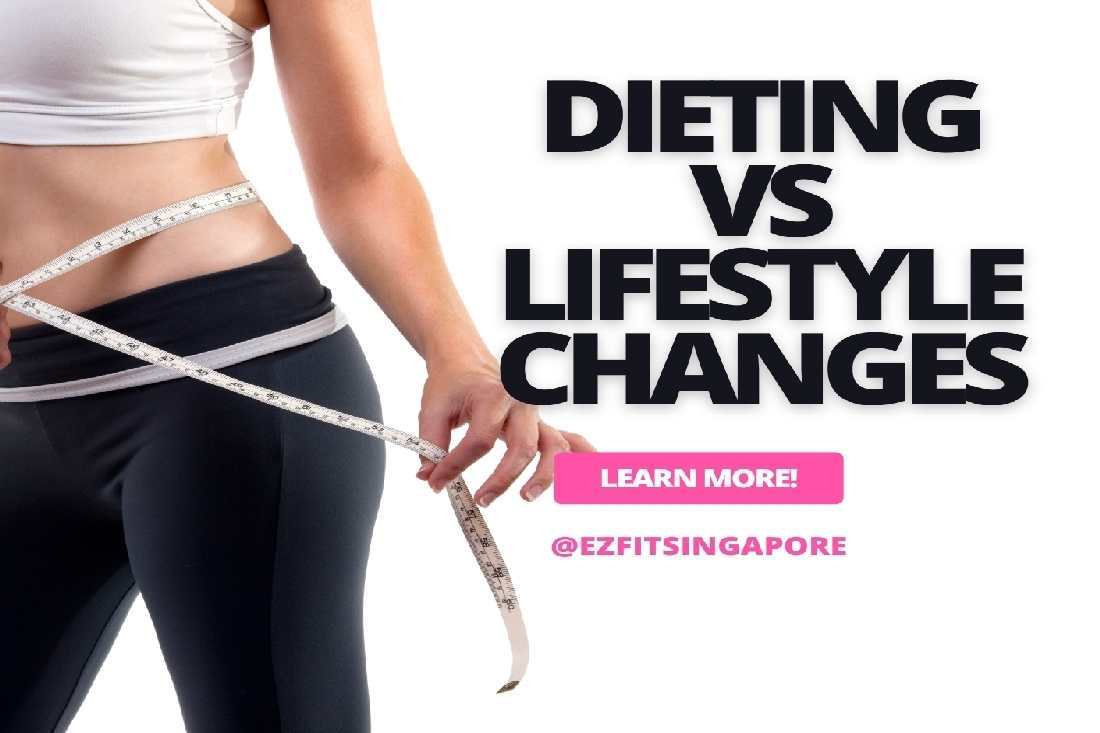Everyone wants to know what they can do to reduce their risk of breast cancer. Some of the factors associated with breast cancer like your gender, age, and genetics cannot be changed. Other factors such as obesity, lack of exercise, cigarette smoking, and unhealthy diet can be changed through choices. By choosing the healthiest lifestyle choices, you can empower yourself and ensure that your risk of breast cancer is as low as possible.
Breast cancer is a complex and often confusing disease. It is not clear what causes normal cells to grow and multiply out of control. Researchers know that certain hormonal, genetic, environmental, and lifestyle risk factors are the likelihood of breast cancer. It’s also true that people with few or no risk factors will still get breast cancer and people with many risk factors will never get breast cancer.
What Causes Breast Cancer?
Put simply, breast cancer occurs when cells in the breast grow abnormally. Researchers attribute these cellular changes to a complicated interplay of genetic and environmental factors, although the cause in an individual breast cancer patient may remain unknown. When cells divide, the abnormal cancers congregate in masses or clumps and may also spread (metastasize) to other parts of the body, such as lymph nodes.
Most breast cancers in both women and men start in the ducts that produce milk; this is called invasive ductal carcinoma. Other types of breast cancer start in other cells of the breast tissue, including glandular tissue called the lobule; this is called invasive lobular carcinoma. Genetic mutations are also important to mention here. Researchers estimate that between 5% and 10% of all breast cancers are due to inherited genetic mutations passed from generation to generation through DNA. While many inherited genetic mutations increase breast cancer risk, the two most well-known are BRCA1 and BRCA2.
BRCA1 and BRCA2 are tumour suppressor genes that, when working as they should prevent breast cells from growing abnormally but when those genes are mutated and don’t work as they should, your risk of breast (and ovarian) cancer increases. According to the CDC, one in 500 women carries a mutation in their BRCA1 or BRCA2 genes.
Risk Factors for Breast Cancer
The risk of breast cancer is higher in women than in men. Women in the US have a one in eight chance of developing this type of cancer at some point in their life. In contrast, a man born in the United States today has a 1 in 800 chance of being diagnosed with breast cancer in his lifetime.
Risk factors for male breast cancer are not well understood. While researchers have identified a handful of genetic and environmental factors that may play a role, most men have no known risk factors other than older age. Breast cancer in men is diagnosed on average at the age of 71.
Much more is known about risk factors in women. However, the presence of one (or more) risk factors does not prepare a woman for a future with breast cancer, just as the absence of risk factors does not mean she will never develop breast cancer.
Lifestyle Risk Factors for Breast Cancer
A risk factor is anything that increases your chance of developing breast cancer, such as breast cancer. Having one or more risk factors does not mean you will get the disease.
Certain risk factors for breast cancer are related to personal behaviours such as diet and physical activity. Other lifestyle-related risk factors include decisions about having children and taking medications that contain hormones.
1) Alcohol Consumption
Alcohol consumption is associated with an increased risk of breast cancer. The risk increases with the amount of alcohol consumed. Women who drink 1 alcoholic beverage daily have a slightly increased risk (about 7% to 10%) compared to women who do not drink, while women who drink 2 or 3 alcoholic beverages daily have an increased risk of about 20% risk have risk. Alcohol is also associated with an increased risk of other types of cancer.
2) Overweight or Obese
Being overweight or obese after menopause increases the risk of breast cancer. Before menopause, a woman’s ovaries produce most of her estrogen, and adipose tissue produces only a small portion of the total.
After menopause (when the ovaries stop producing estrogen), most estrogen comes from adipose tissue. More fatty tissue after menopause can increase estrogen levels and increase the chance of developing breast cancer. Obese women also tend to have higher levels of insulin in their blood. Higher insulin levels have been linked to some types of cancer, including breast cancer.
Still, the link between weight and breast cancer risk is complex. For example:
- The risk of breast cancer after menopause is higher for women who gained weight as an adult.
- For women who are overweight or obese before menopause, the risk is lower.
The reasons for this aren’t exactly clear. Weight might also have different effects on different types of breast cancer.
For example:
- Being overweight after menopause is more likely to be associated with an increased risk of hormone receptor-positive breast cancer.
- Some research suggests that being overweight before menopause may increase your risk of rarer triple-negative breast cancer.
3) Not Being Physically Active
There is growing evidence that regular physical activity reduces the risk of breast cancer, particularly in postmenopausal women. The main question is how much activity is needed. Some studies have found that even a few hours a week can help, although more seems to be better
It’s not exactly clear how physical activity may reduce the risk of breast cancer, but it may be due to its effects on body weight, inflammation, and hormone levels.
Doctors recommend adults get 150 to 300 minutes of moderate-intensity activity or 75 to 150 minutes of vigorous-intensity activity (or a combination of both) weekly. The idea is to meet or exceed the limit of 300 minutes.
4) Not Having Children
Women who have not had children or who have had their first child after the age of 30 have a something greater risk of breast cancer overall. Having many pregnancies and getting pregnant at a young age reduces the risk of breast cancer.
However, the effect of pregnancy on breast cancer risk is complex. For example, the risk of breast cancer is greatest in the first decade after birth. The risk then decreases over time.
5) Do Not Breastfeed
Most studies suggest that breastfeeding may slightly reduce the risk of breast cancer especially if it lasts a year or more. However, this has been difficult to study, particularly in countries such as the United States where breastfeeding for such a long period is uncommon. A possible explanation for this effect is that breastfeeding reduces a woman’s total number of lifelong menstrual cycles (same as starting menses at age or going through early menopause).
6) Birth Control
Some birth control methods use hormones, which may increase the risk of breast cancer.
- Oral Contraceptives: Most studies have found that women who take contraceptives who use oral contraceptives (birth control pills) have a slightly higher risk of breast cancer than women who have never used them. Once the pill is stopped, this risk appears to return to normal in about 10 years.
- Injections For Contraception: Some studies suggest that taking progesterone -long duration injections Contraceptive treatment (like Depo-Provera) every 3 months might increase the risk of breast cancer, but not all studies have found this.
- Implants, Contraceptives, Skin Patches, Vaginal Rings: These forms of contraception also use hormones that could theoretically drive the growth of breast cancer. Some studies suggest an association between the use of IUDs as the released hormones and breast cancer risk, but few studies have examined the use of contraceptive implants, patches, and rings and the risk of breast cancer.
7) Hormone Therapy in Menopause
Hormone therapy in menopause (MHT) with estrogen (often in combination with progesterone) has been used for many years used to relieve symptoms. Menopause and prevent osteoporosis (bone loss). This treatment is also known by other names such as these including postmenopausal hormone therapy (PHT) and hormone replacement therapy (HRT).
There are three main types of hormone therapy:
For women who still have a uterus (womb), doctors usually prescribe estrogen and progesterone (known as combined hormone therapy, or simply HT). Progesterone is necessary because estrogen alone can increase the risk of uterine cancer.
For women who have had a hysterectomy (who no longer have a uterus), you can use estrogen alone. This is known as Estrogen Replacement Therapy (ERT) or simply Estrogen Therapy (ET).
Hormone Therapy (HT)
The use of hormone therapy after menopause increases this breast cancer risk. This increased risk is usually observed after about 4 years of use. Combined HT also increases the likelihood that the cancer is at a more advanced stage.
The increased risk of combined HT seems to apply mostly to current and new users. A woman’s risk of breast cancer appears to decrease again within 5 years of stopping treatment, although the increased risk does not entirely disappear.
Bioidentical Hormone Therapy
The word bioidentical is sometimes used to describe versions of estrogen and progesterone with the same chemical structure as occurring naturally in humans (as opposed to the slightly different versions found in most medications). Using these hormones has been marketed as a safer way to treat menopausal symptoms. But since there aren’t many studies comparing “bioidentical” or “natural” hormones to synthetic versions of the hormones, there’s no proof they’re safe. More studies are needed to know for sure. Until then, it should be assumed that the use of these bioidentical hormones carries the same health risks as any other type of hormone therapy.
Estrogen therapy (ET)
Studies of estrogen use alone after menopause have had mixed results. Some have noted a slight increase in risk, while others have noted no increase in risk or even a slight reduction in risk. If ET increases breast cancer risk, that’s not much.
There aren’t many valid reasons for postmenopausal hormone therapy (either combined HT or ET) currently, other than possibly for short-term relief of menopausal symptoms. In addition to increasing the risk of breast cancer, combined HT also appears to increase the risk of heart disease, blood clots, and stroke.
It reduces the risk of colon cancer and osteoporosis, but this needs to be weighed against the potential harm, especially since there are other ways to prevent and treat osteoporosis, and screening can sometimes prevent colon cancer. While it is not clear whether ET increases the risk of breast cancer, it does increase the risk of stroke.
The decision to use HT should be made by the woman and her doctor after considering the possible risks and benefits (including the severity of menopausal symptoms) and considering other risk factors for heart disease, breast cancer, and osteoporosis. If you decide that you should try HT for menopausal symptoms, it is generally best to use it at the lowest dose that is right for you and for the shortest possible time
Risk Factors You Cannot Change
Aging
The risk of breast cancer increases with age. Most breast cancers are diagnosed after the age of 50.
Genetic Mutations
Women who have inherited changes (mutations) in certain genes, such as BRCA1 and BRCA2, are at increased risk of breast and ovarian cancer.
Reproductive History
Beginning menstruation before age 12 and beginning menopause after age 55 expose women to hormones for longer, which increases the risk of breast cancer.
Having Dense Breasts
Dense breasts have more connective tissue than fatty tissue, which can sometimes make it difficult to detect tumours on a mammogram. Women with dense breasts are more likely to develop breast cancer.
Personal History of Breast Cancer or Certain Noncancerous Breast Conditions
Women who have had breast cancer are more likely to get breast cancer a second time. Some benign breast diseases, such as atypical hyperplasia or lobular carcinoma in situ, are associated with an increased risk of breast cancer.
Familial History of Breast Cancer or Ovarian Cancer
A woman’s risk of breast cancer is increased if she has a mother, sister, or daughter (first-degree relatives), or multiple family members on her mother’s or father’s side who have had breast cancer or ovarian cancer. Having a male first-degree relative with breast cancer also increases a woman’s risk.
Prior Treatment with Radiation Therapy
Women who have received radiation therapy to the chest or breasts (for example, treatment for Hodgkin’s lymphoma) before the age of 30 have an increased risk of developing breast cancer later in life.
Exposure To the Drug Diethylstilbestrol (DES)
Des was given to some pregnant women in the United States between 1940 and 1971 to prevent miscarriage. Women who took DES or whose mothers took DES during pregnancy have an increased risk of breast cancer.




